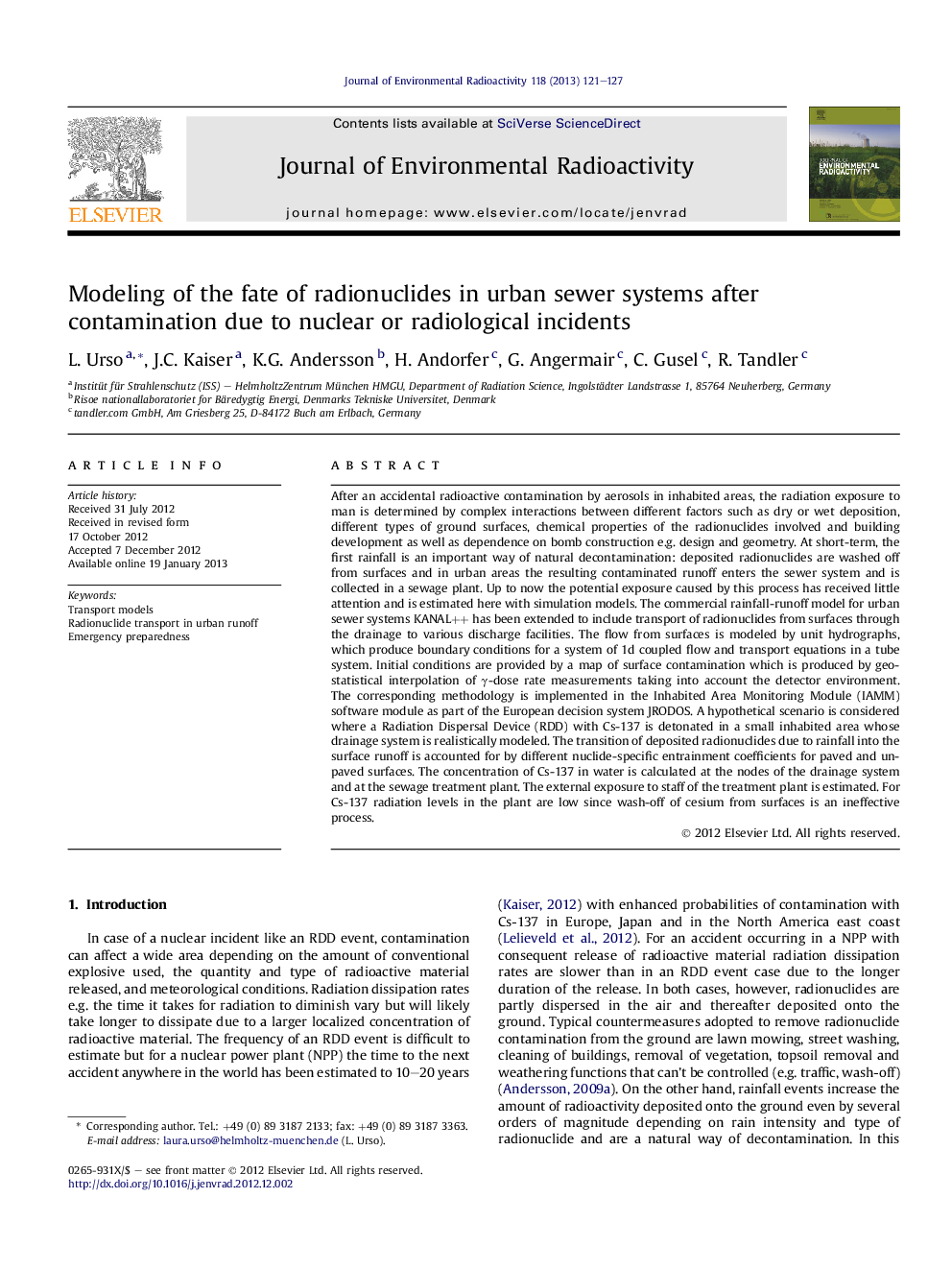| کد مقاله | کد نشریه | سال انتشار | مقاله انگلیسی | نسخه تمام متن |
|---|---|---|---|---|
| 1738217 | 1521615 | 2013 | 7 صفحه PDF | دانلود رایگان |

After an accidental radioactive contamination by aerosols in inhabited areas, the radiation exposure to man is determined by complex interactions between different factors such as dry or wet deposition, different types of ground surfaces, chemical properties of the radionuclides involved and building development as well as dependence on bomb construction e.g. design and geometry. At short-term, the first rainfall is an important way of natural decontamination: deposited radionuclides are washed off from surfaces and in urban areas the resulting contaminated runoff enters the sewer system and is collected in a sewage plant. Up to now the potential exposure caused by this process has received little attention and is estimated here with simulation models. The commercial rainfall-runoff model for urban sewer systems KANAL++ has been extended to include transport of radionuclides from surfaces through the drainage to various discharge facilities. The flow from surfaces is modeled by unit hydrographs, which produce boundary conditions for a system of 1d coupled flow and transport equations in a tube system. Initial conditions are provided by a map of surface contamination which is produced by geo-statistical interpolation of γ-dose rate measurements taking into account the detector environment. The corresponding methodology is implemented in the Inhabited Area Monitoring Module (IAMM) software module as part of the European decision system JRODOS. A hypothetical scenario is considered where a Radiation Dispersal Device (RDD) with Cs-137 is detonated in a small inhabited area whose drainage system is realistically modeled. The transition of deposited radionuclides due to rainfall into the surface runoff is accounted for by different nuclide-specific entrainment coefficients for paved and unpaved surfaces. The concentration of Cs-137 in water is calculated at the nodes of the drainage system and at the sewage treatment plant. The external exposure to staff of the treatment plant is estimated. For Cs-137 radiation levels in the plant are low since wash-off of cesium from surfaces is an ineffective process.
► A rainfall-runoff model is coupled with transport of radionuclides in urban waters.
► Urban water contamination after a radiological incident is estimated.
► The external exposure to staff of the treatment plant is quantified for Cs-137.
► Radiation levels are low as wash-off of Cs-137 is an ineffective process.
► An assessment tool for radiation doses from urban waste water is now available.
Journal: Journal of Environmental Radioactivity - Volume 118, April 2013, Pages 121–127